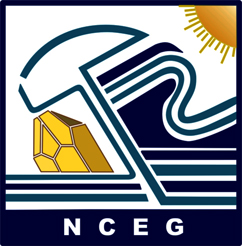Geological and tectonic setting of the October 08, 2005 Kashmir earthquake
.
Ahmad Hussain 1, Robert S. Yeats 2and MonaLisa 3
1Geological Survey of Pakistan, Peshawar, Pakistan
2Dept. of Geosciences, Oregon State University, Corvallis, OR 97331, USA
3Dept. of Earth Sciences, Quaid-i-Azam University, Islamabad, Pakistan
The source of the 8 October 2005 earthquake of M 7.6 was the northwest-striking Balakot-Bagh fault, which had been mapped by the Geological Survey of Pakistan prior to the earthquake but, except for a 16-km section near Muzaffarabad, had not been recognized as active. The fault follows the Indus-Kohistan Seismic Zone; both cut across and locally offset the Hazara-Kashmir syntaxis defined by the Murree and Panjal thrusts. The fault has no expression in facies of the Miocene-Pleistocene Siwalik Group, but does offset late Pleistocene terrace deposits in Pakistan-administered Jammu-Kashmir. Two en-echelon anticlines near Muzaffarabad and Balakot expose Precambrian Muzaffarabad Limestone and are cut by the Balakot-Bagh fault on their southwest side, suggesting that folding and exposure of Precambrian rocks by erosion accompanied Quaternary displacement along the fault. The Balakot-Bagh fault has reverse separation, northeast side up; uplift of the northeast side accompanies displacement, producing high topography and steeper stream gradients northeast of the fault. No surface expression of the Balakot-Bagh fault has been found northwest of the syntaxis, although the Indus-Kohistan Seismic Zone continues at least as far as the Indus River and was the site of the Pattan earthquake of M 6.2 in 1974. To the southeast, northwest-striking faults, one of which is flanked by an anticline exposing Precambrian limestone, were mapped by the Geological Survey of Pakistan. Farther southeast, in Indian-administered territory, active faulting may follow the Riasi thrust, where Holocene activity has been described. In the Kangra re-entrant still farther southeast, active faulting may follow the Soan thrust, along which Holocene and Pleistocene offsets have been described. The Soan thrust, rather than the south flank of the Janauri anticline, may represent the surface projection of the 1905 Kangra earthquake of M 7.8. |

